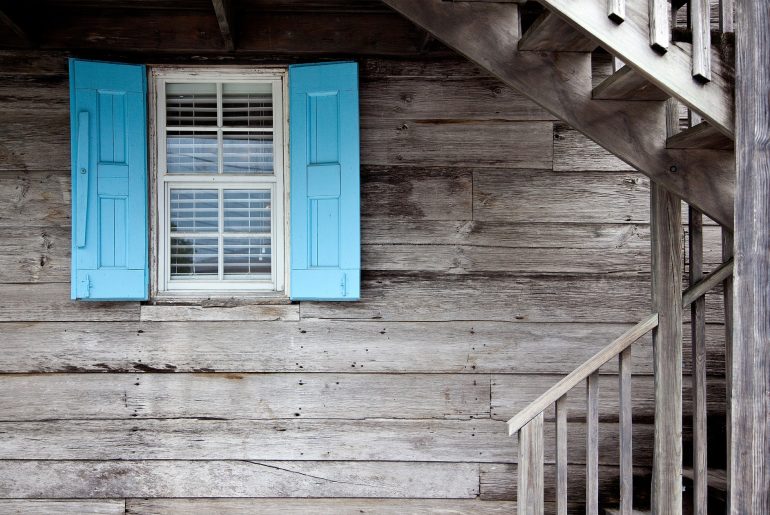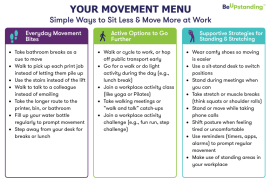With COVID-19 cases still high and influenza cases rapidly escalating, we are continuing to spend substantial amounts of time confined to home. The WHO recently released guidance on why and how to stay physically active during self-quarantine. The article, which is available here, has been reproduced below. Although written for the European region, the key messages are applicable to our Australian context.
Stay Physically Active During Self-Quarantine
Warning: This guidance is intended for people in self-quarantine without any symptoms or diagnosis of acute respiratory illness. It should not replace medical guidance in case of any health condition.
As new COVID-19 cases continue to emerge in the WHO European Region, many healthy individuals are being requested to stay at home in self-quarantine. In some countries, fitness centres and other locations where individuals are normally active, will remain temporarily closed. Staying at home for prolonged periods of time can pose a significant challenge for remaining physically active. Sedentary behaviour and low levels of physical activity can have negative effects on the health, well-being and quality of life of individuals. Self-quarantine can also cause additional stress and challenge the mental health of citizens. Physical activity and relaxation techniques can be valuable tools to help you remain calm and continue to protect your health during this time.
WHO recommends 150 minutes of moderate-intensity or 75 minutes of vigorous-intensity physical activity per week, or a combination of both. These recommendations can still be achieved even at home, with no special equipment and with limited space. The following are some tips on how to stay active and reduce sedentary behaviour while at home in self-quarantine:

Take short active breaks during the day. Short bouts of physical activity add up to the weekly recommendations. You may use the suggested exercises below as inspiration to be active every day. Dancing, playing with children, and performing domestic chores such as cleaning and gardening are other means to stay active at home.

Follow an online exercise class. Take advantage of the wealth of online exercise classes. Many of these are free and can be found on YouTube. If you have no experience performing these exercises, be cautious and aware of your own limitations.

Walk. Even in small spaces, walking around or walking on the spot, can help you remain active. If you have a call, stand or walk around your home while you speak, instead of sitting down. If you decide to go outside to walk or exercise, be sure to maintain at least a 1-meter distance from other people.

Stand up. Reduce your sedentary time by standing up whenever possible. Ideally, aim to interrupt sitting and reclining time every 30 minutes. Consider setting up a standing desk by using a high table or stacking a pile of books or other materials, to continue working while standing. During sedentary leisure time prioritize cognitively stimulating activities, such as reading, board games, and puzzles.

Relax. Meditation and deep breaths can help you remain calm. A few examples of relaxation techniques are available below for inspiration.

For optimal health, it is also important to remember to eat healthily and stay hydrated. WHO recommends drinking water instead of sugar-sweetened beverages. Limit or avoid alcoholic beverages for adults and strictly avoid these in young people, and pregnant and breastfeeding women, or for other health reasons. Ensure plenty of fruits and vegetables, and limit the intake of salt, sugar and fat. Prefer whole grains rather than refined foods. For more guidance on how to eat healthily during self-quarantine, please see the Food and nutrition tips during self-quarantine, prepared by WHO/Europe.
Examples of home-based exercises
To support individuals in staying physically active while at home, WHO/Europe has prepared a set of examples of home-based exercises.
Knee to elbow
Plank

Support your forearms firmly on the ground, with the elbows under the shoulders. Keep the hips at the level of the head. Hold for 20–30 seconds (or more, if possible), rest for 30–60 seconds, and repeat up to 5 times. This exercise strengthens your belly, arms and legs.
Back extensions
Touch your ears with your fingertips and lift your upper body, keeping the legs on the ground. Lower the upper body again. Perform this exercise 10–15 times (or more), rest for 30–60 seconds, and repeat up to 5 times. This exercise strengthens your back muscles.
Squats

Place your feet at hip distance with the toes pointing slightly outwards. Bend the knees as much as feels comfortable, keeping the heels on the ground and the knees over (not in front of) the feet. Bend and stretch the legs. Perform this exercise 10–15 times (or more), rest for 30–60 seconds, and repeat up to 5 times. This exercise strengthens your legs and glutes.
Side knee lifts
Touch your knee with your elbow, lifting the knee to the side, alternating sides. Find your own pace. Try to perform this for 1–2 minutes, rest for 30–60 seconds, and repeat up to 5 times. This exercise should increase your heart and breathing rates.
Superman

Place your hands under your shoulders and knees under your hips. Lift one arm forward and the opposite leg back, alternating sides. Perform this exercise 20–30 times (or more), rest for 30–60 seconds, and repeat up to 5 times. This exercise strengthens your belly, glutes and back muscles.
Bridge

Plant your feet firmly on the ground with the knees over the heels. Lift the hips as much as it feels comfortable and slowly lower them again. Perform this exercise 10–15 times (or more), rest for 30–60 seconds, and repeat up to 5 times. This exercise strengthens your glutes.
Chair dips

Hold onto the seat of a chair, with your feet about half a meter away from the chair. Bend your arms as you lower your hips to the ground, then straighten the arms. Perform this exercise 10–15 times (or more), rest for 30–60 seconds, and repeat up to 5 times. This exercise strengthens your triceps.
Chest opener
Interlace your fingers behind your back. Stretch your arms and open your chest forward. Hold this position for 20–30 seconds (or more). This position stretches your chest and shoulders.
Child’s pose

With the knees on the ground, bring your hips to your heels. Rest your belly on your thighs and actively stretch your arms forward. Breathe normally. Hold this position for 20–30 seconds (or more). This position stretches your back, shoulders and sides of the body.
Seated meditation

Sit comfortably on the floor with your legs crossed (alternatively, sit on a chair). Make sure your back is straight. Close your eyes, relax your body and progressively deepen your breathing. Concentrate on your breath, trying not to focus on any thoughts or concerns. Remain in this position for 5–10 minutes or more, to relax and clear your mind.
Legs up the wall

Bring your hips close (5–10 cm) to the wall and let your legs rest. Close your eyes, relax your body and progressively deepen your breathing. Concentrate on your breath, trying not to focus on any thought or concern. Rest in this pose for up to 5 minutes. This position is meant to be comfortable, relaxing and de-stressing.
![]()













Comments are closed.